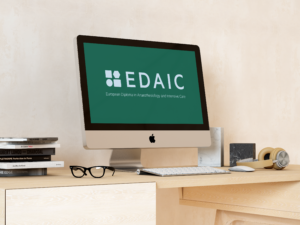Newsletter 2022
Newsletter February 2022: Opioid misuse after surgery: can I do something about it?
Tzima Maria, MD, MSc, PhD(c), Trainee Anaesthesiologist, Ippokrateio General Hospital of Thessaloniki, Greece. Marc Giménez-Milà. Consultant anaesthetist. Hospital CLINIC Barcelona. Spain
Dear Editor,
Daliya et al 1 have recently published a retrospective observational cohort study about an opioid prescription at postoperative discharge following intermediate or major general surgery. The study included 499 patients operated during March 2019 in 14 hospitals in England. The intermediate and major groups had a similar proportion of opioid prescriptions at the discharge of 21% and 21.6% respectively. Of note, 107 patients were discharged with regular opioids and 78 patients had no written deprescribing advice on discharge. The authors conclude that there is a lack of adherence to postoperative analgesia guidelines and poor prescribing practice were noted.
Opioid misuse is a matter of issue since the 19th century when England and China fought twice for their trade.2 Laudanum was known as ‘white opium’ and was used without a prescription, for the treatment of cough, diarrhoea and pain. Nowadays, opioid use has much more alarming dimensions, with increased rates of fatal or non-fatal doses and behavioural problems, when it comes to children or adolescents. In the US, 50.000 opioid-related deaths are reported annually and postoperative prescription of opioids is a major cause.3-11
Opioids are commonly used during and after surgery to minimise and control pain to facilitate rehabilitation.3-11 However, their use may be related to serious complications. Increased rates of postoperative pain and nausea, urine retention, ileus, dizziness, respiratory depression are common side effects in the postoperative period, that may prolong hospital stay and cost. Hyperalgesia and tolerance are two opposite effects, which also are related to opioid use. Patients who used opioids before surgery are also more susceptible to further opioid misuse.
Multimodal anaesthesia is gaining ground and opioid free anaesthesia (OFA) is being used more and more.4 Different pharmacological agents are used to offer adequate conditions for surgery, such as dexmedetomidine, ketamine, lidocaine, clonidine, paracetamol, NSAIDs, betablockers, gabapentinoids and regional anaesthesia techniques. The synergistic effect of all the above drugs contributes to antinociception. Fast-track protocols in different surgical specialities include OFA or opioid-sparing techniques to reduce hospital length of stay and cost.
Healthcare workers should optimise pain management, in order to reduce opioid-related side-effects, by educating families about pain management. 3
In conclusion, opioids are a useful tool in the anaesthetists’ tools but their widespread use has led to misuse with serious complications. We, as anaesthetists are obliged to modulate surgical nociceptive stimulus either with opioids or with the other coadjuvants as described above. We should not forget that bad control of acute postoperative pain is a well-recognised risk factor for developing chronic pain. OFA should never be accompanied by uncontrolled acute pain with the excuse of avoiding postoperative opioid dependency behaviours. Sometimes, perfect is the enemy of good.
References
- Daliya, P., Adiamah, A., Roslan, F et al. Anaesthesia, 76: 1367-1376. https://doi.org/10.1111/anae.15460
- https://en.wikipedia.org/wiki/Opium_Wars
- Lawal OD, Gold J, Murthy A, et al. JAMA Netw Open.2020;3(6):e207367.
- Hah JM, Bateman BT, Ratliff J, et al, Anesth Analg. 2017;125(5):1733-1740.
- Neuman MD, Bateman BT, Wunsch H. Lancet. 2019;393(10180):1547-1557.
- Thiesset HF, Schliep KC, Stokes SM et al, J Surg Res. 2020 Aug; 252:200-205
- Harbaugh CM, Lee JS, Hu HM et al, Pediatrics. 2018 Jan;141(1): e2017-2439.
- Rucinski K, Cook JL. J Orthop. 2020 Jan 21; 20:154-159. doi: 10.1016/j.jor.2020.01.020.
- Yorkgitis BK, Brat GA. Am J Surg. 2018 Apr;215(4):707-711.
- Namiranian K, Siglin J, Sorkin JD, et al,. J Subst Abuse Treat. 2020 Feb; 109:8-13.
- Kelley-Quon LI, Kirkpatrick MG, Ricca RLet al, JAMA Surg. 2021 Jan 1;156(1):76-90..











